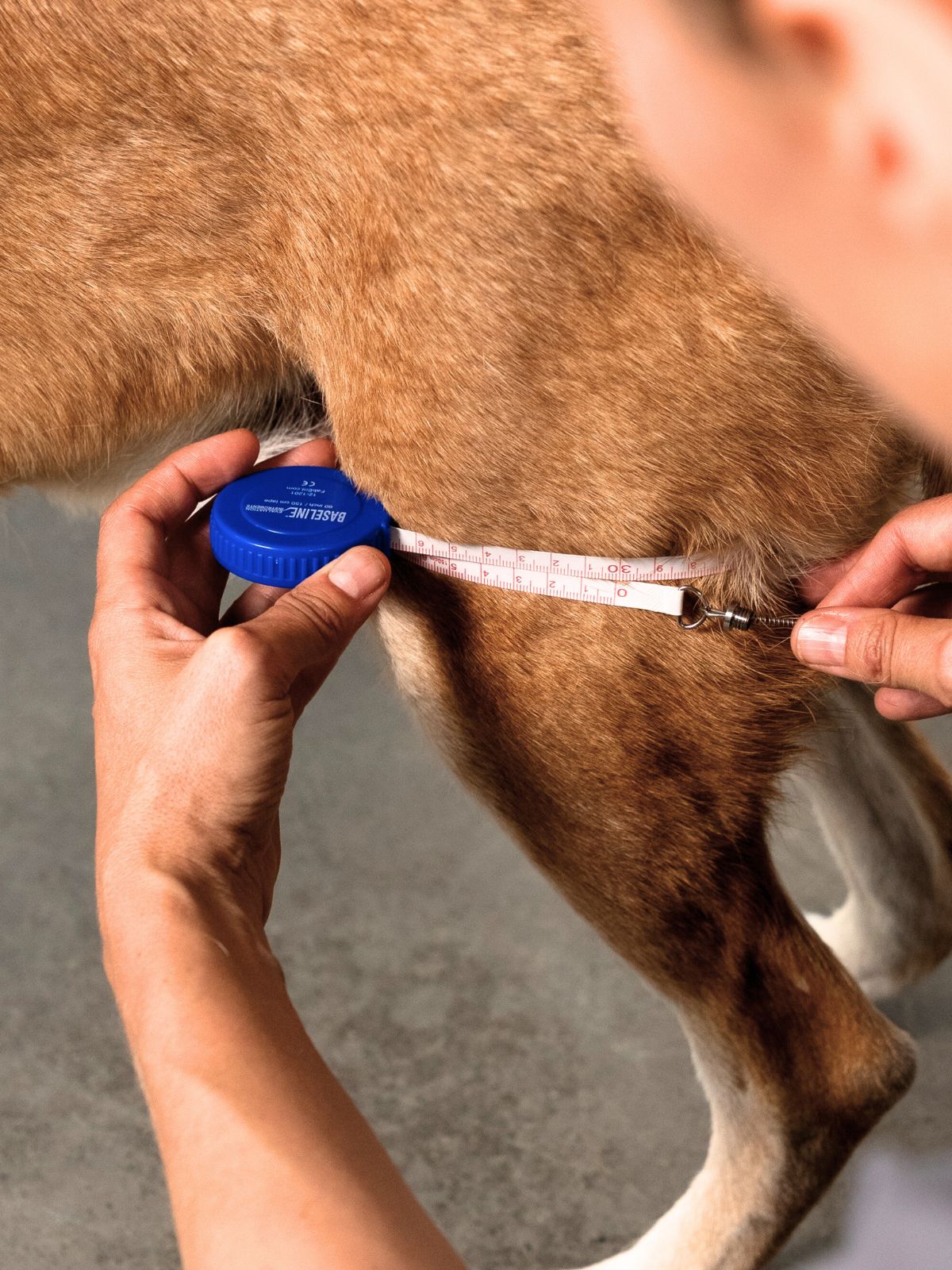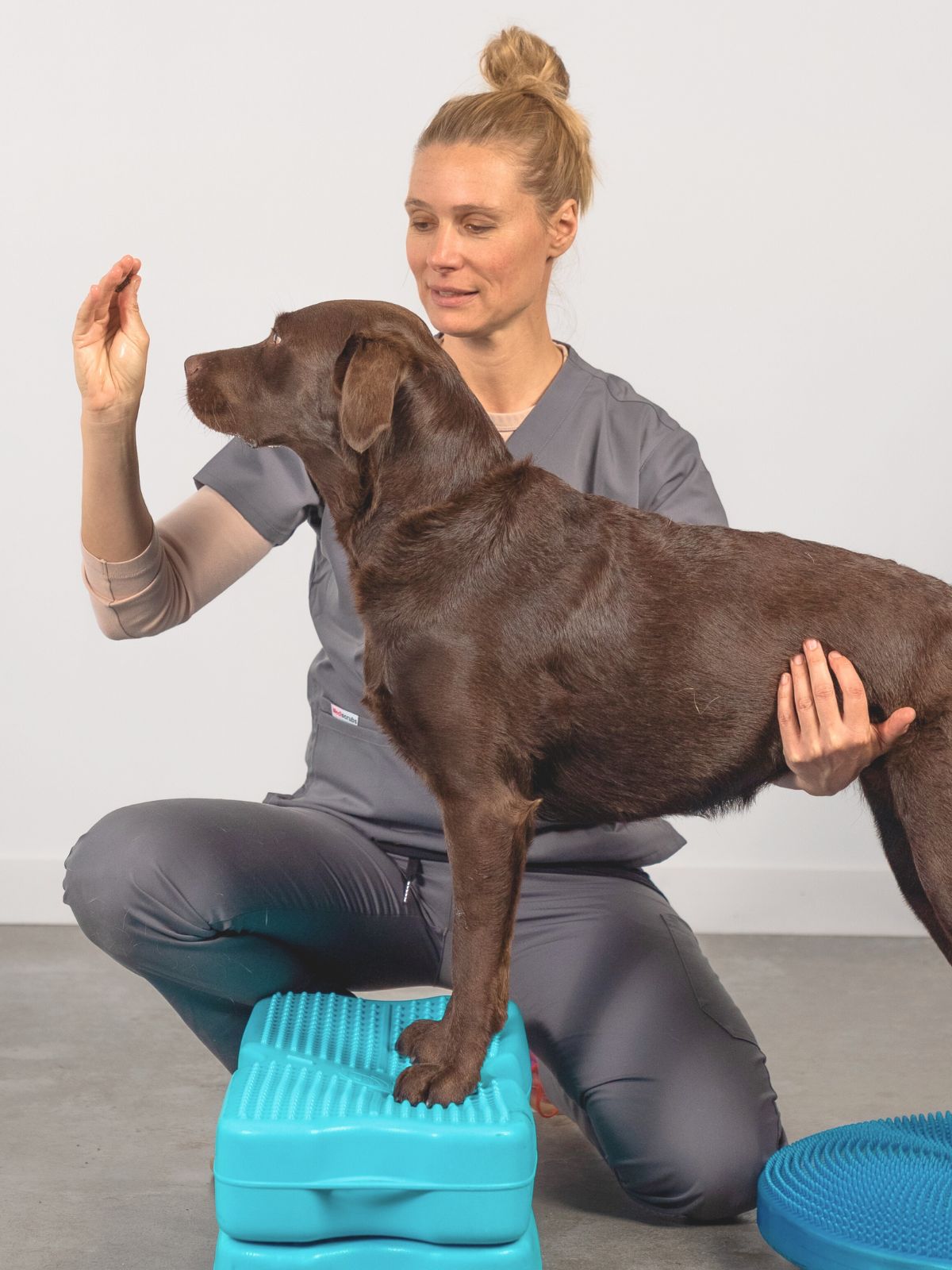Muscle Atrophy in Dogs
In-Home Canine Rehabilitation to Address Muscle Loss, Rebuild Strength, and Support Safe, Functional Movement
Understanding Muscle Atrophy in Dogs?
Muscle atrophy in dogs refers to the loss of muscle mass and strength due to disuse, injury, neurological impairment, pain, or ageing. It is a common secondary consequence of orthopaedic or neurological conditions and may also result from prolonged rest, reduced activity, or compensation for pain or instability.
Dogs with muscle atrophy may show visible muscle loss, weakness, difficulty rising, reduced endurance, or asymmetrical movement. In some cases, atrophy develops gradually and goes unnoticed until mobility becomes noticeably compromised.
Common causes include post-operative recovery (e.g. cruciate or spinal surgery), chronic arthritis, intervertebral disc disease (IVDD), degenerative myelopathy, and prolonged offloading due to lameness. If not addressed, muscle atrophy can contribute to joint stress, balance deficits, and further mobility decline.
At Paws4Paws, we assess the underlying cause and functional impact of muscle loss, delivering targeted in-home rehabilitation to restore strength, improve movement quality, and support long-term physical health.
Rehabilitation for Muscle Atrophy in Dogs
Rehabilitation aims to safely rebuild muscle strength, improve functional capacity, and prevent further decline. At Paws4Paws, we tailor each in-home program to your dog’s underlying condition, activity level, and physical limitations—whether the atrophy is related to surgery, neurological dysfunction, chronic pain, or inactivity.
Our rehabilitation approach may include:
-
Therapeutic exercise to progressively load weakened muscle groups, restore symmetrical strength, and improve endurance
-
Neuromuscular re-education to reactivate inhibited muscles and retrain coordinated, functional movement
-
Proprioceptive and balance training to enhance stability and postural control
-
Manual therapy to address soft tissue tightness, improve circulation, and support muscle recruitment
-
Laser therapy (PBMT) to reduce inflammation, relieve discomfort, and promote tissue metabolism
-
Home exercise programs to reinforce clinical gains, encourage daily engagement, and maintain strength between sessions
-
Owner education on flooring, home setup, and realistic activity progression
By targeting the cause and impact of atrophy, rehabilitation supports a safer return to movement, reduces strain on compensating structures, and helps maintain strength for daily function.
Why Rehabilitation Matters
Rehabilitation is essential in addressing muscle atrophy—whether it results from injury, surgery, neurological impairment, chronic pain, or age-related decline. Without early and structured intervention, ongoing muscle loss can lead to joint instability, poor limb control, reduced endurance, and compensatory strain on the spine and opposite limbs.
Rehab helps prevent these secondary issues by reactivating weakened muscle groups, promoting safe and symmetrical movement, and improving overall function. It plays a vital role in recovery after orthopaedic or spinal surgery, in managing progressive neurological conditions, and in supporting dogs with chronic pain or reduced activity levels.
Rehabilitation supports:
-
Muscle reactivation and strength rebuilding
-
Improved postural control and weight distribution
-
Better movement efficiency and joint protection
-
Reduced risk of further injury or mobility loss
-
Long-term physical function across all life stages
Whether preventative, restorative, or maintenance-based, rehabilitation provides a clinically guided approach to managing muscle loss and enhancing your dog’s quality of life.


